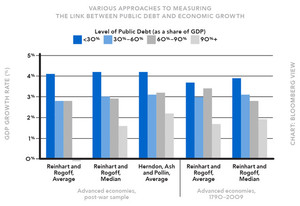Consider the lengths to which health scientists go to try to understand the workings of female desire: Using a laboratory gadget that measures vaginal blood flow while women watch varieties of pornography. Having women wear headgear that tracks the precise movement of their pupils, hundreds of times per second, as they gaze at X-rated images.
Studying female hamsters and even arachnids mating as a way to glean insight into women's sexual psyches. Wiring women's necks and forearms to what they are told is a polygraph machine while they fill out surveys about their sex lives, their answers then compared with those of women who aren't wired up -- and compared in turn with the responses of men. These are all attempts to see around or beneath the societal messages and cultural influences that may distort women's sexuality and constrain its expression, even in our seemingly unconstrained times. (Yes, the lie detector had a much bigger effect on the women than the men, greatly increasing the number of partners women said they'd had sex with.)

Serotonin is a molecule of self-control. It instills calm, stability, coherence (and, too, a sense of well-being, which is why S.S.R.I.'s, by bathing the brain in serotonin, can counter depression). Roughly speaking, dopamine is impulse; serotonin is inhibition and organization. And in sexuality, as in other emotional realms, the two have to work in balance. If dopamine is far too dominant, craving can splinter into attentional chaos. If serotonin overwhelms, the rational can displace the randy.
The equipment can seem bizarre and the laboratory situations comical -- picture a woman in a lounge chair with her pants around her knees, a tampon-shaped tube in her vagina and a cord running from this device to a console while she stares at a video of gay men partaking in foreplay -- but then, sex research has always had an absurd if valiant quality. In the '50s and '60s, William H. Masters and Virginia E. Johnson filmed and observed hundreds of subjects having intercourse in their lab, in an effort to determine whether all female climaxes are clitoral in origin. That debate goes on even today. Barry Komisaruk, a neuroscientist at Rutgers University, buys plastic rods, heats them in his oven at home, bends them into dildos shaped to isolate different genital sensations and aims to settle the orgasm question once and for all.
One general principle about women's desire has been widely embraced since at least as far back as Victorian times and prevails still: that female eros is, innately, much less promiscuous -- much more dependent on commitment and trust, much more sparked by closeness, much better suited to constancy -- than male sexuality. It has surely been comforting to anyone concerned with the preservation of social order to think that, a few exceptions aside, half the population has a natural predisposition toward sexual stability. In recent decades, this idea has been bolstered by evolutionary psychologists, whose "parental investment theory" goes like this: because men have limitless sperm while women have limited eggs, because men don't have to invest much in reproduction while women invest not just their ova but also their bodies as they take on the tolls and risks of pregnancy and childbirth, males have been hard-wired, since eons ago, to expand their genetic legacy by spreading their cheap seed, while females are inherently made to maximize their investment by being choosy, by securing a male likely to be a good long-term provider.
Tuiten's pills work somewhat differently than the drugs that came before them. For one thing, both Lybrido and Lybridos contain two active chemicals, timed so that their effects converge. Each drug tampers with the interplay between serotonin and dopamine, giving dopamine, carrier of lust, a temporary edge.
Both drugs have a peppermint-flavored testosterone coating that melts in the mouth. When the exterior is gone, the woman swallows a delayed-release inner tablet. In Lybrido, this inner pill is a close cousin of Viagra. The idea is that the Viagra-like molecule, by making extra blood flow to the genitals and adding to swelling and sensation, will work in conjunction with the testosterone. Together they will stir the mind to be more aware of erotic impulses; together they will help spark dopamine networks. Lybridos uses a compound called buspirone instead of the Viagra-like substance. Buspirone was originally used as an anti-anxiety medication, and if taken every day it can elevate serotonin in the brain. But as long as it's taken no more than every other day, it has a unique short-term effect: for a few hours, serotonin is suppressed.
-- Daniel Bergner is a contributing writer for the magazine. This article is adapted from his book, "What Do Women Want? Adventures in the Science of Female Desire," to be published by Ecco next month.



